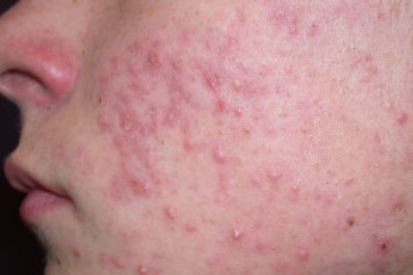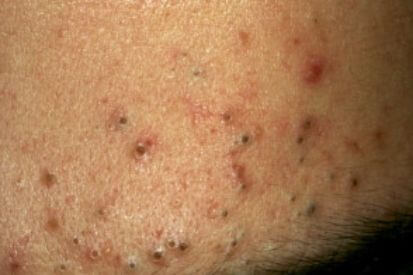Understanding the Different Types of Acne and How to Treat Them
Your Guide to Identifying and Managing Acne
 Acne is a common skin condition that affects millions of people around the world. While it’s often associated with teenagers, adults can experience acne as well. Understanding the different types of acne and their treatments can help you manage and improve your skin health effectively. In this blog, we’ll break down the various types of acne and provide practical tips for treatment.
Acne is a common skin condition that affects millions of people around the world. While it’s often associated with teenagers, adults can experience acne as well. Understanding the different types of acne and their treatments can help you manage and improve your skin health effectively. In this blog, we’ll break down the various types of acne and provide practical tips for treatment.
Types of Acne
1. Comedonal Acne
Comedonal acne is characterized by the presence of comedones, which are clogged hair follicles. They appear as blackheads or whiteheads on the skin. Blackheads are open comedones where the clog is exposed to air, causing it to darken. Whiteheads are closed comedones with a white or flesh-colored appearance.
Treatment: To treat comedonal acne, look for products containing salicylic acid or benzoyl peroxide. These ingredients help to clear out clogged pores and reduce inflammation. Regular exfoliation can also help prevent new comedones from forming.
2. Inflammatory Acne
Inflammatory acne includes papules, pustules, and nodules. Papules are small, red, tender bumps, while pustules are similar but filled with pus. Nodules are larger, more painful lumps that form deeper within the skin.
Treatment: For inflammatory acne, consider using topical antibiotics or retinoids prescribed by a dermatologist. Oral antibiotics or hormone therapy may be recommended for severe cases. Consistent use of a gentle, non-comedogenic moisturizer can also help manage inflammation and prevent further breakouts.
Examples of Acne



3. Cystic Acne
Cystic acne is a severe form of inflammatory acne that results in deep, painful cysts. These cysts can lead to scarring if not treated properly. Cystic acne is often associated with hormonal changes and may be resistant to over-the-counter treatments.
Treatment: Treatment for cystic acne typically involves prescription medications, such as oral isotretinoin or hormonal treatments like birth control pills. A dermatologist can tailor a treatment plan to your specific needs and help manage potential side effects.
4. Hormonal Acne
Hormonal acne is primarily influenced by hormonal fluctuations, often occurring around the menstrual cycle, pregnancy, or menopause. It usually appears on the lower face, jawline, and neck.
Treatment: Managing hormonal acne often requires a combination of lifestyle changes and medication. Birth control pills or anti-androgens like spironolactone can help regulate hormones and reduce acne. Additionally, maintaining a balanced diet and managing stress levels can be beneficial.
Schedule Your Appointment with Keystone Dermatology
Understanding the different types of acne and their treatments is the first step toward clearer skin. However, navigating your options can be overwhelming. At Keystone Dermatology, our experienced team can provide personalized advice and effective treatments tailored to your unique skin needs.
If you’re struggling with acne or need professional guidance on how to manage it, don’t hesitate to reach out. Schedule an appointment with us today to get started on your journey to healthier, clearer skin.

Schedule Your Acne Appointment at Keystone Dermatology Partners
Taking control of your acne starts with understanding it. Let us help you find the right treatment and achieve the skin you’ve always wanted.
Related Blogs

- Skin Cancer
- Sun Safety
When it comes to sunscreen, does a bigger (higher) SPF number mean its better than one with a smaller one? Discover the effectiveness of your sunscreen and what SPF you should be applying.
Read More
- General Dermatology
- Skin Care
Read this blog to explore the connection between chocolate consumption and acne.
Read More
- General Dermatology
- Skin Care
Discover effective acne treatments, from OTC solutions to professional procedures, and find the right option for you at Keystone Dermatology Partners.
Read More


